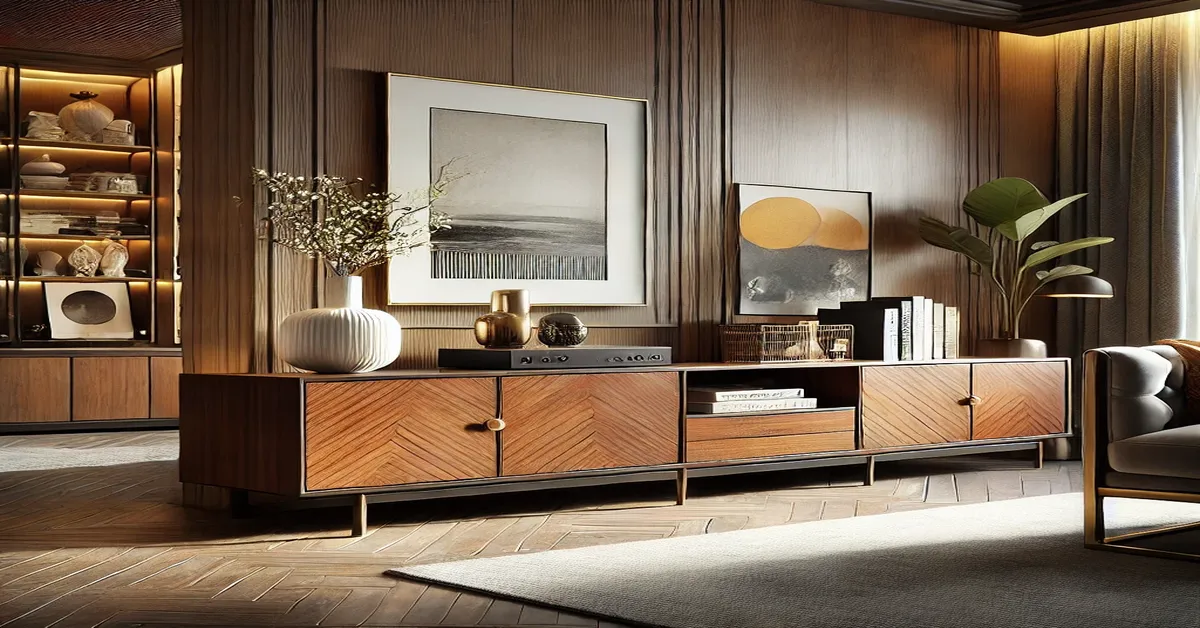The credenza is one of the most versatile and stylish pieces of furniture, seamlessly blending form and function. Originating centuries ago, the credenza has evolved into a staple in both traditional and modern interiors, finding a home in dining rooms, living spaces, offices, and beyond. Its sleek, low profile, ample storage space, and aesthetic appeal make the credenza a must-have for anyone looking to combine practicality with sophistication in their interior design.
Historical Background
The word “credenza” originates from the Italian term meaning “belief” or “trust.” In the 16th century, the term referred to the act of tasting food and drink for poison before serving them to a noble or royal person—a practice that demonstrated trustworthiness. Over time, the term evolved to describe the furniture piece used to hold these items during the tasting process.
During the Renaissance period, the credenza became a prominent feature in Italian homes, particularly in the dining area. These early credenzas were not just practical but also highly decorative, featuring ornate woodwork, intricate carvings, and rich inlays that reflected the artistry of the time. From its humble origins as a functional piece of furniture, the credenza grew into a symbol of craftsmanship and elegance.
Design and Features
The credenza is characterized by its low height and long, narrow shape, making it a versatile addition to any space. Its design typically includes a combination of cabinets and drawers, offering ample storage space for a variety of items. Whether it’s storing fine china, linens, or office supplies, the credenza serves as both a storage unit and a decorative element.
One of the defining features of a credenza is its adaptability. Available in a wide range of styles, materials, and finishes, credenzas can easily blend into any interior design theme. Traditional credenzas often feature intricate woodwork and ornate detailing, while modern designs favor clean lines, minimalistic hardware, and innovative materials like metal, glass, or laminate.
Uses and Placement
Originally designed for dining rooms, the credenza’s functionality has expanded over the years. In its traditional role, it serves as a storage solution for dishes, glasses, cutlery, and table linens. It can also double as a serving station during meals or gatherings, providing a convenient surface for placing food, drinks, or decorative items.
In contemporary settings, the credenza has found a place in various rooms, including:
- Living Rooms: Used to hold books, photo albums, or entertainment systems. A credenza can also serve as a TV stand, combining style and functionality.
- Home Offices: In an office setting, a credenza desk provides additional workspace and storage for files, office supplies, or even printers.
- Bedrooms: Acting as a low dresser or storage unit, a credenza can hold clothing, accessories, or extra bedding.
- Hallways and Entryways: A credenza placed near the entrance offers both storage and a surface for keys, mail, or decorative items like vases and sculptures.
Variations and Related Furniture
The term “credenza” is often used interchangeably with sideboards and buffets, though there are subtle differences:
- Sideboards: Generally taller than credenzas and may include additional features like hutches. They are also designed for dining areas but tend to have shorter legs and a more substantial build.
- Buffets: Similar to sideboards, but often larger and specifically designed for serving food. Buffets are more common in traditional dining settings.
In office environments, the term “credenza desk” refers to a piece of furniture that complements the main desk. Typically placed behind or adjacent to the primary workspace, the credenza desk provides additional surface area and storage, making it a practical addition to any office setup.
Materials and Styles
Credenzas are available in a variety of materials and styles, allowing them to suit any interior design preference.
- Traditional: Often crafted from solid wood like mahogany, oak, or walnut, traditional credenzas feature ornate details such as carved legs, decorative handles, and rich finishes.
- Modern: Modern credenzas prioritize clean lines and simplicity. They may incorporate materials like glass, metal, or high-gloss laminate for a sleek and contemporary look.
- Mid-Century Modern: Popular for their minimalist design and retro appeal, mid-century modern credenzas are often made from teak or walnut and feature tapered legs and sliding doors.
- Rustic and Farmhouse: These credenzas emphasize natural materials and textures, often featuring distressed finishes, reclaimed wood, or barn-style doors.
Cultural Significance
In Italian culture, the credenza holds historical significance, reflecting the customs and practices of the Renaissance period. Its evolution into a furniture piece highlights the interplay of functionality and artistry in Italian craftsmanship. Over centuries, the credenza has transcended its original purpose, becoming a universal symbol of elegance and utility.
Modern Interpretations
Today, credenzas continue to be a popular choice for homeowners and designers alike. Their versatility makes them suitable for both residential and commercial spaces. From antique designs that exude timeless charm to sleek, modern pieces that align with contemporary aesthetics, credenzas remain a favorite for their ability to enhance any space.
In modern interiors, credenzas are often paired with other design elements to create cohesive spaces. For example, a credenza placed beneath a large mirror or an abstract piece of artwork can serve as a focal point in a living room or hallway. Similarly, in offices, a credenza with built-in cable management features can neatly house electronic devices while maintaining a clutter-free appearance.
Choosing the Right Credenza
Selecting the perfect credenza for your space involves several considerations:
- Size: Measure the available space to ensure the credenza fits without overwhelming the room. Consider the height, width, and depth based on your needs.
- Style: Choose a design that complements your existing decor. Whether you prefer traditional, modern, or rustic styles, there’s a credenza to match.
- Functionality: Think about how you plan to use the credenza. Will it serve as a storage unit, a decorative piece, or both?
- Material: Consider the material based on durability and aesthetic appeal. Solid wood is timeless, while metal and glass offer a modern touch.
- Features: Look for additional features like adjustable shelves, sliding doors, or cable management systems, depending on your requirements.
Maintenance and Care
To keep your credenza looking its best, regular maintenance is essential:
- Cleaning: Dust the surface regularly and use a damp cloth to clean spills or stains. Avoid abrasive cleaners that can damage the finish.
- Polishing: For wooden credenzas, apply furniture polish or wax periodically to maintain their luster.
- Avoid Direct Sunlight: Prolonged exposure to sunlight can fade the finish. Place your credenza in a shaded area or use curtains to filter sunlight.
- Protect the Surface: Use coasters, placemats, or protective pads to prevent scratches or heat damage.
The Future of Credenzas
As interior design trends continue to evolve, the credenza remains a versatile and enduring piece of furniture. Its ability to adapt to changing styles and functional needs ensures its place in homes and offices for generations to come. With advancements in materials and manufacturing techniques, future credenzas are likely to incorporate innovative features that further enhance their appeal.
Conclusion
The credenza is more than just a piece of furniture; it is a testament to the enduring marriage of functionality and beauty. From its origins in Renaissance Italy to its modern-day applications, the credenza has proven to be an indispensable element in interior design. Whether used for storage, display, or as a decorative focal point, this timeless masterpiece continues to enrich spaces with its elegance and practicality.
FAQs
- What is the primary function of a credenza?
- A credenza serves as a storage unit, traditionally used in dining rooms to hold dishes, glassware, and linens.
- How does a credenza differ from a sideboard?
- While both are storage pieces, a credenza is typically lower and longer, often with sliding doors, whereas a sideboard is taller with cabinets and sometimes a hutch.
- Can a credenza be used in an office setting?
- Yes, in offices, a credenza can function as additional storage or a secondary workspace, often placed behind the main desk.
- What materials are commonly used to make credenzas?
- Credenzas are commonly made from wood, but modern designs may incorporate materials like metal, glass, or laminate.
- Are credenzas suitable for modern interior designs?
- Absolutely, credenzas come in various styles, including contemporary designs that complement modern interiors.
- How should I choose the right credenza for my space?
- Consider the size, style, and functionality that best suit your room’s decor and your storage needs.











